 W
W350.org is an international environmental organization addressing the climate crisis. Its stated goal is to end the use of fossil fuels and transition to renewable energy by building a global, grassroots movement.
 W
WAdawro is an exclosure located in the Dogu'a Tembien woreda of the Tigray Region in Ethiopia. The area has been protected by the local community since 1994.
 W
WAddi Lihtsi is an exclosure located in the Dogu'a Tembien woreda of the Tigray Region in Ethiopia. The area is protected by the local community.
 W
WAddi Meles is an exclosure located in the Dogu'a Tembien woreda of the Tigray Region in Ethiopia. The area is protected by the local community.
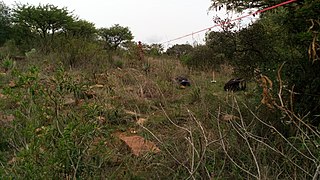 W
WAddilal is an exclosure located in the Dogu'a Tembien woreda of the Tigray Region in Ethiopia. The area has been protected since 1992 by the local community.
 W
WAfedena is an exclosure located in the Dogu'a Tembien woreda of the Tigray Region in Ethiopia. The area has been protected since 2008 by the local community.
 W
WAsparagopsis taxiformis, formerly A. sanfordiana, is a species of red alga, with cosmopolitan distribution in tropical to warm temperate waters.
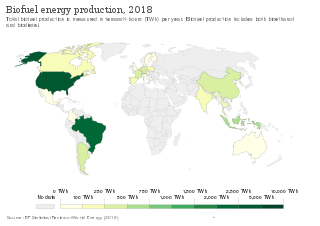 W
WA biofuel is a fuel that is produced through contemporary processes from biomass, rather than a fuel produced by the very slow geological processes involved in the formation of fossil fuels, such as oil. Since biomass technically can be used as a fuel directly, some people use the terms biomass and biofuel interchangeably. More often than not, however, the word biomass simply denotes the biological raw material the fuel is made of, or some form of thermally/chemically altered solid end product, like torrefied pellets or briquettes.
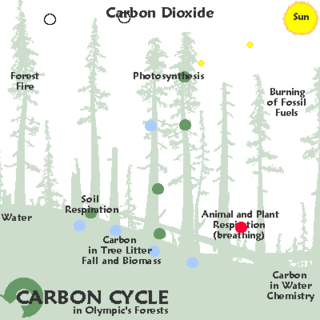 W
WBiosequestration is the capture and storage of the atmospheric greenhouse gas carbon dioxide by continual or enhanced biological processes.
 W
WBritish Columbia's carbon tax and accompanying tax shift has been in place since 2008. It is a British Columbia policy which adds additional carbon taxes to fossil fuels burned for transportation, home heating, and electricity, and reduces personal income taxes and corporate taxes by a roughly equal amount. The carbon tax is collected at the point of retail consumption. British Columbia's policy is unique in North America; only Quebec has a similar retail tax but it is set at a much lower rate and does not include a matching tax shift. Unlike most governments, British Columbia's electricity portfolio largely consists of hydroelectric power and their energy costs, even with the tax, are lower than most countries.
 W
WCarbfix is a process that captures CO2 and other acid gases in water, then injects this water into the subsurface where the gases are stored as stable minerals. Work developing this process began in 2007. Since 2020 Carbfix is a subsidiary of Reykjavik Energy.
 W
WCarbon-neutral fuel is energy fuel or energy systems which have no net greenhouse gas emissions or carbon footprint. One class is synthetic fuel produced from renewable, sustainable or nuclear energy used to hydrogenate carbon dioxide directly captured from the air (DAC), recycled from power plant flue exhaust gas or derived from carbonic acid in seawater. Renewable energy sources include wind turbines, solar panels, and hydroelectric powerful power stations. Another type of renewable energy source is biofuel. Such fuels are potentially carbon-neutral because they do not result in a net increase in atmospheric greenhouse gases.
 W
WCarbon sequestration or carbon dioxide removal (CDR) is the long-term removal, capture or sequestration of carbon dioxide from the atmosphere to slow or reverse atmospheric CO2 pollution and to mitigate or reverse global warming.
 W
WA carfree city is a population center that relies primarily on public transport, walking, or cycling for transport within the urban area. Districts where motorized vehicles are prohibited are referred to as carfree zones. Carfree city models have gained traction due to current issues with congestion and infrastructure, and proposed environmental and quality of life benefits. Currently in Asia, Europe and Africa, many cities continued to have carfree areas due to inception before the origin of the automobile. Many developing cities in Asia are currently using the proposed model to modernize its infrastructure.
 W
WCertified Emission Reductions (CERs) are a type of emissions unit issued by the Clean Development Mechanism (CDM) Executive Board for emission reductions achieved by CDM projects and verified by a DOE under the rules of the Kyoto Protocol.
 W
WCh’elaqo is an exclosure located in the Dogu'a Tembien woreda of the Tigray Region in Ethiopia.
 W
WCoal pollution mitigation, sometimes called clean coal, is a series of systems and technologies that seek to mitigate the health and environmental impact of coal; in particular air pollution from coal-fired power stations, and from coal burnt by heavy industry.
 W
WThe Climate Mobilization (TCM) is a grassroots environmental advocacy group working toward large-scale political action against global warming, with the belief that the crisis of climate change requires a national economic effort on the scale of the American mobilization of the home front during World War II.
 W
WClimate-friendly gardening is gardening in ways which reduce emissions of greenhouse gases from gardens and encourage the absorption of carbon dioxide by soils and plants in order to aid the reduction of global warming. To be a climate-friendly gardener means considering both what happens in a garden and the materials brought into it and the impact they have on land use and climate. It can also include garden features or activities in the garden that help to reduce greenhouse gas emissions elsewhere.
 W
WA consumer green energy program is a program that enables households to buy energy from renewable sources. By allowing consumers to purchase renewable energy, it simultaneously diverts the utilization of fossil fuels and promotes the use of renewable energy sources such as solar and wind.
 W
WCycling, also called bicycling or biking, is the use of bicycles for transport, recreation, exercise or sport. People engaged in cycling are referred to as "cyclists", "bicyclists", or "bikers". Apart from two-wheeled bicycles, "cycling" also includes the riding of unicycles, tricycles, quadricycles, recumbent and similar human-powered vehicles (HPVs).
 W
WA defeat device is any motor vehicle hardware, software, or design that interferes with or disables emissions controls under real-world driving conditions, even if the vehicle passes formal emissions testing. The term appears in the US Clean Air Act and European Union regulations, to describe anything that prevents an emissions control system from working, and applies as well to power plants or other air pollution sources, as to automobiles.
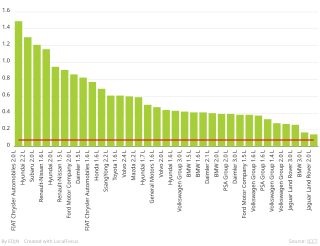 W
WIn 2014 onwards, software which manipulated air pollution tests was discovered in vehicles from some car makers; the software recognized when the standardized emissions test was being done, and adjusted the engine to emit less during the test. The cars emitted much higher levels of pollution under real-world driving conditions. Some cars emissions were higher even though there was no manipulated software.
 W
WThe Energiewende is the ongoing transition by Germany to a low carbon, environmentally sound, reliable, and affordable energy supply. The new system intends to rely heavily on renewable energy, energy efficiency, and energy demand management. Most if not all existing coal-fired generation are intended to be retired. Legislative support for the Energiewende was passed in late 2010 and included greenhouse gas (GHG) reductions of 80–95% by 2050 and a renewable energy target of 60% by 2050.
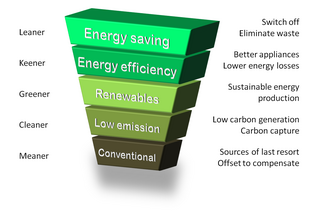 W
WThe Energy Hierarchy is a classification of energy options, prioritised to assist progress towards a more sustainable energy system. It is a similar approach to the waste hierarchy for minimising resource depletion, and adopts a parallel sequence.
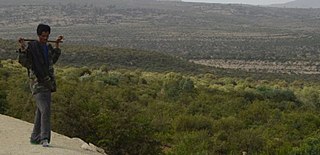 W
WThe EthioTrees Ecosystem Restoration Association, in short EthioTrees, established in 2016, is a project for environmental rehabilitation and woodland restoration in Dogu’a Tembien (Ethiopia).
 W
WSeveral countries have taken initiatives to phase out coal.
 W
WFossil fuel phase-out is the gradual reduction of the use of fossil fuels to zero. It is part of the ongoing renewable energy transition. Current efforts in fossil fuel phase-out involve replacing fossil fuels with sustainable energy sources in sectors such as transport, and heating.
 W
WGemgema is an exclosure located in the Dogu'a Tembien woreda of the Tigray Region in Ethiopia. The area has been protected since 1992 by the local community.
 W
WThe Greenhouse Gas Pollution Pricing Act is a Canadian federal law establishing a set of minimum national standards for greenhouse gas pricing in Canada to meet emission reduction targets under the Paris Agreement. It was passed as Part 4 of the Budget Implementation Act, 2018, No. 1 – an omnibus budget bill – during the 42nd Parliament of Canada. The law came into force immediately upon receiving royal assent on 21 June 2018.
 W
WHarehuwa is an exclosure located in the Dogu'a Tembien woreda of the Tigray Region in Ethiopia. The area has been protected since 1999 by the local community.
 W
WKhunale is an exclosure located in the Dogu'a Tembien woreda of the Tigray Region in Ethiopia. The area has been protected since 1990 by the local community.
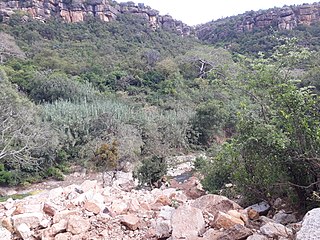 W
WKidmi Gestet is an exclosure located in the Dogu'a Tembien woreda of the Tigray Region in Ethiopia.
 W
WLafa is an exclosure located in the Dogu'a Tembien woreda of the Tigray Region in Ethiopia. The area has been protected since 1988 by the local community.
 W
WMay Be’ati is an exclosure located in the Dogu'a Tembien woreda of the Tigray Region in Ethiopia. The area has been protected since 1968 by the local community.
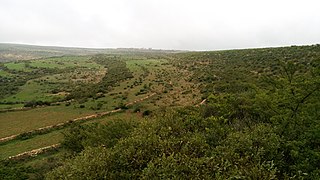 W
WMay Genet is an exclosure located in the Dogu'a Tembien woreda of the Tigray Region in Ethiopia. The area has been protected since 2010 by the local community.
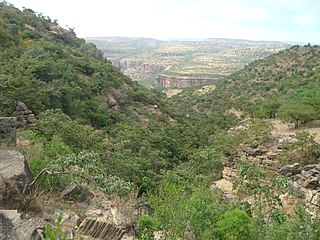 W
WMay Hib’o is an exclosure located in the Dogu'a Tembien woreda of the Tigray Region in Ethiopia. The exclosure holds a 70-metre long cave.
 W
WMi'am Atali is an exclosure located in the Dogu'a Tembien woreda of the Tigray Region in Ethiopia. The area has been protected since 2010 by the local community.
 W
WMitigation of global warming involves taking actions to reduce greenhouse gas emissions and to enhance sinks aimed at reducing the extent of global warming. This is in distinction to adaptation to global warming, which involves taking action to minimize the effects of global warming. Scientific consensus on global warming, together with the precautionary principle and the fear of non-linear climate transitions, is leading to increased effort to develop new technologies and sciences and carefully manage others in an attempt to mitigate global warming.
 W
WNo Pressure is a 2010 short film produced by the global warming mitigation campaign 10:10, written by Richard Curtis and Franny Armstrong, and directed by Dougal Wilson. Intended for cinema and television advertisements, No Pressure is composed of scenes in which a variety of men, women and children in every-day situations are graphically blown to pieces for failing to be sufficiently enthusiastic about the 10:10 campaign to reduce CO2 emissions. The film's makers said that they viewed No Pressure as "a funny and satirical tongue-in-cheek little film in the over-the-top style of Monty Python or South Park". Before its release, The Guardian described it as "attention-grabbing" and "pretty edgy."
 W
WThe One-Tonne Challenge was a challenge presented by the Government of Canada in March 2004 for Canadians to reduce their greenhouse gas emissions by one tonne each year. The figure represented 20% of total greenhouse gas output by Canadians at the time and aimed to help the country reach its Kyoto Protocol emission reduction targets. The Liberal Government under Jean Chrétien and Paul Martin approved over $45 million to fund the program from 2003 to 2006.
 W
WPea soup fog is a very thick and often yellowish, greenish or blackish fog caused by air pollution that contains soot particulates and the poisonous gas sulphur dioxide. This very thick smog occurs in cities and is derived from the smoke given off by the burning of soft coal for home heating and in industrial processes. Smog of this intensity is often lethal to vulnerable people such as the elderly, the very young and those with respiratory problems. The result of these phenomena was commonly known as a London particular or London fog; in a reversal of the idiom, "London particular" became the name for a thick pea and ham soup.
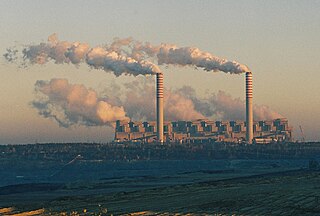 W
WThe Powering Past Coal Alliance (PPCA) is a group of 104 countries, cities, regions and organisations aiming to accelerate the fossil-fuel phase out of coal-fired power stations, except the very few which have carbon capture and storage. It has been described as a "non-proliferation treaty" for fossil fuels. The project was undertaken with financial support from the Government of Canada, through their environmental department known as Environment and Climate Change Canada.
 W
WReducing emissions from deforestation and forest degradation and the role of conservation, sustainable management of forests and enhancement of forest carbon stocks in developing countries (REDD+) was first negotiated under the United Nations Framework Convention on Climate Change (UNFCCC) in 2005, with the objective of mitigating climate change through reducing net emissions of greenhouse gases through enhanced forest management in developing countries. Most of the key REDD+ decisions were completed by 2013, with the final pieces of the rulebook finished in 2015.
 W
WReforestation is the natural or intentional restocking of existing forests and woodlands (forestation) that have been depleted, usually through deforestation, but also after clearcutting.
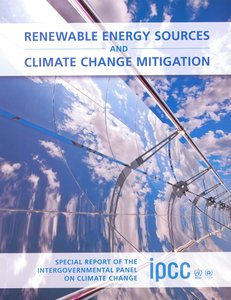 W
WThe United Nations Intergovernmental Panel on Climate Change (IPCC) published a special report on Renewable Energy Sources and Climate Change Mitigation (SRREN) on May 9, 2011. The report developed under the leadership of Ottmar Edenhofer evaluates the global potential for using renewable energy to mitigate climate change. This IPCC special report provides broader coverage of renewable energy than was included in the IPCC's 2007 climate change assessment report, as well as stronger renewable energy policy coverage.
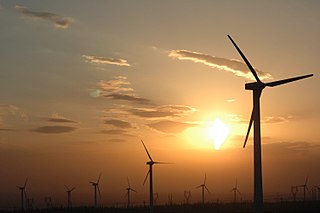 W
WThe renewable energy transition is the ongoing energy transition which is replacing fossil fuels with renewable energy. This transition can impact many aspects of life including the environment, society, the economy and governance.
 W
WThe RETScreen Clean Energy Management Software is a software package developed by the Government of Canada. RETScreen Expert was highlighted at the 2016 Clean Energy Ministerial held in San Francisco. The Government of Canada's Treasury Board Secretariat uses RETScreen Expert as its greenhouse gas reporting tool for all federal departments and agencies required to report emissions.
 W
WSesemat is an exclosure located in the Dogu'a Tembien woreda of the Tigray Region in Ethiopia. The area has been protected since 1993 by the local community.
 W
WSustainable energy is energy produced and used in such a way that it "meets the needs of the present without compromising the ability of future generations to meet their own needs."
 W
WTogogwa is an exclosure located in the Dogu'a Tembien woreda of the Tigray Region in Ethiopia. The area has been protected since 1988 by the local community.
 W
WTukhul is an exclosure located in between the villages of Tukhul and Miheni in the Dogu'a Tembien woreda of the Tigray Region in Ethiopia. The area has been protected since 1998 by the local community.
 W
WThe Under2 Coalition is a coalition of subnational governments that aims to achieve greenhouse gases emissions mitigation. It started as a memorandum of understanding, which was signed by twelve founding jurisdictions on May 19, 2015 in Sacramento, California. Although it was originally called the Under2 MOU, it became known as the Under2 Coalition in 2017. As of September 2018, the list of signatories has grown to over 220 jurisdictions which combined encompasses over 1.3 billion people and 43% of the world economy. The Under2 MOU was conceived through a partnership between the governments of California and Baden-Wurttemberg, with The Climate Group acting as secretariat.
 W
WThe Volkswagen emissions scandal, also known as Dieselgate or Emissionsgate, began in September 2015, when the United States Environmental Protection Agency (EPA) issued a notice of violation of the Clean Air Act to German automaker Volkswagen Group. The agency had found that Volkswagen had intentionally programmed turbocharged direct injection (TDI) diesel engines to activate their emissions controls only during laboratory emissions testing which caused the vehicles' NO x output to meet US standards during regulatory testing, but emit up to 40 times more NO x in real-world driving. Volkswagen deployed this software in about 11 million cars worldwide, including 500,000 in the United States, in model years 2009 through 2015.
 W
WZiban Dake is an exclosure located in the Dogu'a Tembien woreda of the Tigray Region in Ethiopia.